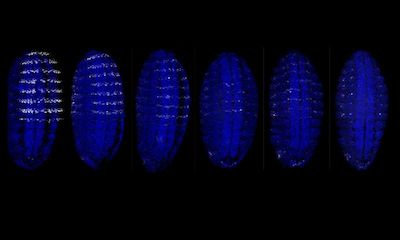Release date: 2018-04-08
The genome is equivalent to the body's "Guidebook", which stores the most primitive information of the organism in the form of DNA, which determines the various traits of the organism and the risk of disease. But since the "manual" is written in biological language, decoding becomes very challenging. Today, researchers from Columbia University have developed a computer tool that translates the most difficult segments of the genome to decode. Based on this approach, researchers can further understand how DNA guides the development of organisms, aging, and disease.
The study was published in the latest issue of PNAS.

(Mann Lab/Columbia's Zuckerman Institute)
"A simple creature like Drosophila has 120 million base pairs in its genome. Due to tool limitations, most of the gene fragments have not yet been resolved." The study's author, an independent researcher from Columbia University. Dr. Richard Mann said. "However, the algorithm we developed was able to parse these genetic codes one by one to get a more complete DNA cryptogram."
Geneticists have long wanted to discover the hidden secrets behind DNA. One example is a family of genes called Hox. After decades of exploration, the researchers found that although the effects of each individual Hox gene on growth characteristics are independent, the sequence of the hox transcription factor-binding DNA has a very high similarity.
In 2015, the authors and others found that Hox transcription factors also bind to other DNA sites, albeit with a lower affinity. Researchers believe that these low-affinity sites play a key role in the realization of Hox's multiple regulatory effects. However, how to identify these genomic loci is still no small challenge.
To solve this problem, the authors and others have established a computer model for analyzing genetic activity.
A few years ago, the authors and others developed a gene sequencing method called SELEX-seq that systematically analyzes all Hox binding sites, but the technique also has the drawback of requiring repeated sequencing of repeated DNA fragments. Although every round of sequencing will get new information, low-affinity sites are still difficult to detect.
In order to solve this problem, the authors and others have developed a more complex computer algorithm that can analyze the performance of all sequences in the SELEX-seq experiment for the first time. The algorithm is called BRLB.
The authors believe that the algorithm can help scientists splicing transcription factor binding and activated DNA sequences, which is important for finding genetic therapies that reduce the risk of disease.
Source: Scientists build better way to decode the genome
Original source: Chaitanya Rastogi et al, Accurate and sensitive quantification of protein-DNA binding affinity, Proceedings of the National Academy of Sciences (2018). DOI: 10.1073/pnas.1714376115
Source: Bio Valley
Direct Seeding Machine,Direct Paddy Seeder Machine,Direct Rice Seeding Machine,Paddy Direct Seeding Machine
Taizhou Yingtian Agricultural Machinery Manufacturing Co., Ltd. , https://www.sakuradaagc.com